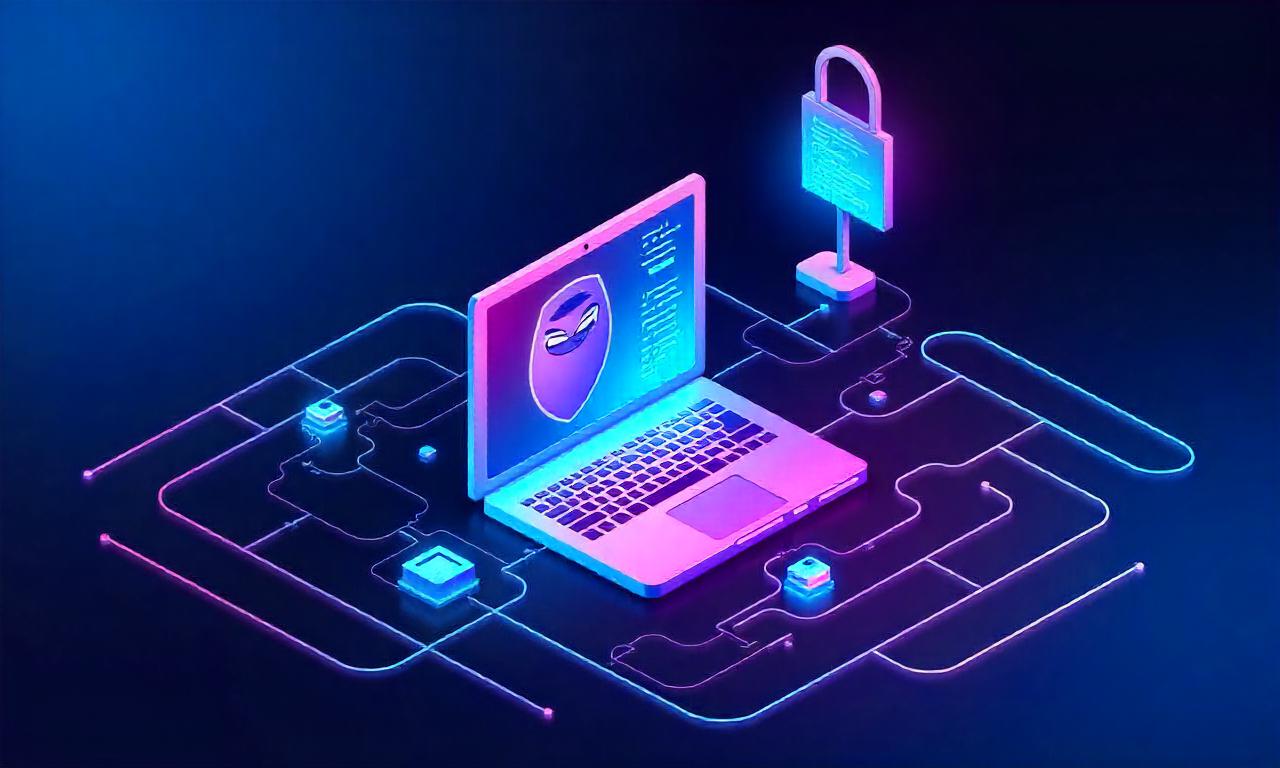Title: What Are the Principles of the CIA Triad in Security?
If you’re building or safeguarding digital systems, you’ve likely heard the term “CIA Triad.” But what exactly does it mean in practice, and why has it endured for decades? If you’re asking what are the principles of the cia triad in security, the short answer is: Confidentiality, Integrity, and Availability. The long answer—and the one that will truly help you design resilient, compliant, and business-aligned controls—requires understanding how these principles interlock, how threats exploit their gaps, and how to apply them across modern architectures like cloud, SaaS, APIs, and DevOps pipelines. This comprehensive guide breaks it all down with actionable insights, examples, and an evergreen roadmap you can adopt today.
H2: Understanding the CIA Triad: Definition, Relevance, and Origins
The CIA Triad is a foundational model in information security that guides how we protect data, systems, and services. Think of it as the de facto compass for aligning security work with business value: keeping secrets secret, ensuring correctness, and delivering reliability. Each pillar influences the others; a control that strengthens one may inadvertently weaken another if not properly designed.
Despite its simplicity, the triad scales to complex ecosystems—multi-cloud deployments, remote workforces, and API-first applications—because it captures what stakeholders truly care about. Boards want to avoid fines and reputational damage (Confidentiality), analysts and data scientists need trusted data (Integrity), and customers expect uninterrupted service (Availability). The triad expresses these needs in security language.
Critically, the CIA Triad continues to serve as a bridge between technical teams and leadership. Whether you’re pursuing ISO/IEC 27001 certification, aligning to the NIST Cybersecurity Framework, or preparing for SOC 2 audits, you will map your controls and evidence back to confidentiality, integrity, and availability. It’s not only the “why” of security—it’s the “how.”
H3: 1. Definition and Components
The triad’s three principles are:
- Confidentiality: Ensuring information is accessible only to those authorized to view it.
- Integrity: Ensuring information is accurate, consistent, and unaltered except by authorized actors.
- Availability: Ensuring systems and data are accessible and usable when required.
These principles are agnostic to technology. Whether you’re storing customer records in a relational database, streaming telemetry in a data lake, or serving content from an edge network, the same three outcomes define successful protection. That makes the triad an evergreen mental model—even as tech stacks evolve.
Each principle also has a risk lens. Confidentiality addresses data leaks and unauthorized access. Integrity addresses tampering, errors, and unsanctioned changes. Availability addresses downtime and performance degradation. In practice, your program must balance all three based on business priorities and risk appetite.
H3: 2. Historical Origins and Evolution
The CIA Triad emerged from early information assurance and computer security research in the late 20th century, where military and academic disciplines intersected. Over time, as businesses digitized, the triad transcended its origins. It became the lingua franca across industries—from healthcare to finance—because the trio maps equally well to medical records, trading systems, and SaaS platforms.
As threats evolved from lone actors to organized cybercrime and nation-state operations, the triad remained intact but gained new implementation patterns. Encryption moved from niche to ubiquitous, hash-based integrity checks became pervasive, and high availability matured into multi-region, multi-cloud strategies. The model stayed constant while the controls advanced.
Today, the triad integrates with wider frameworks: Zero Trust architectures emphasize strict access control (C), strong device and workload identities (I), and microsegmented, resilient services (A). DevSecOps pipelines embed integrity checks (I), secrets management (C), and automated rollbacks and redundancy (A). Same compass, modern map.
H3: 3. Why the CIA Triad Still Matters
The triad persists because it’s practical, measurable, and communicable. Executives can understand and fund it; engineers can implement and test it; auditors can verify it. That’s rare alignment. Its simplicity also helps avoid tunnel vision: when racing to encrypt everything, teams remember to check integrity and availability implications, keeping security from becoming a single-issue program.
Moreover, the triad’s focus on outcomes helps you cut through buzzwords. Whether your vendor touts AI-powered detection or post-quantum crypto, you can ask: Does this improve confidentiality, integrity, availability—or is it just noise? That clarity keeps budgets focused and architectures sane.
Finally, the triad is future-proof. As cryptographic standards evolve, edge computing expands, and regulations tighten, the same three aims remain your anchor. You can modernize tools without losing sight of goals.
H2: Principle 1: Confidentiality — Keeping Data Secret
Confidentiality protects data from unauthorized access and disclosure. It applies to data at rest, in transit, and in use. Strong confidentiality reduces legal exposure, preserves trust, and prevents extortion scenarios like ransomware leaks. It’s also essential for compliance regimes such as GDPR, HIPAA, PCI DSS, and many regional privacy laws.
The biggest misconception is that encryption alone guarantees confidentiality. It doesn’t. You also need identity and access management, key management, least privilege, and secure coding patterns to prevent logic flaws that expose data. Equally important is operational discipline: secrets rotation, audit logging, and tailored monitoring.
Done right, confidentiality safeguards both structured and unstructured content—databases, object storage, logs, backups, and even model weights in ML systems. The control set is broad because data sprawls across environments.
H3: 1. Core Controls for Confidentiality
Confidentiality stems from layered defenses:
- Strong authentication (MFA, phishing-resistant methods like FIDO2) to reduce account takeover.
- Fine-grained authorization via RBAC/ABAC and the principle of least privilege.
- Encryption at rest (AES-256 or equivalent) with centralized, rotated keys; HSM-backed key custodianship.
- Encryption in transit (TLS 1.2+), certificate pinning where feasible, and secure cipher suites.
- Data classification and labeling to drive policy: public, internal, confidential, restricted.
- Data Loss Prevention (DLP) for egress control, plus CASB for SaaS visibility.
- Secrets management for API keys, tokens, and credentials—never hard-code secrets.
- Privacy by design: minimize data collection, tokenize or pseudonymize when possible.
Controls should be automated to avoid drift. For example, enforce encryption-by-default policies and guardrails in cloud templates. Automation ensures consistency at scale across new and existing assets.
Key management deserves special care. Separate duties for key creation, rotation, and usage; log every access; and deploy envelope encryption to limit exposure. In multi-cloud, centralize key lifecycle management to prevent orphaned or weak keys.
H3: 2. Common Threats to Confidentiality
Adversaries exploit the weakest link. Typical vectors include:
- Credential theft via phishing and MFA fatigue attacks.
- Misconfigurations in cloud storage (public buckets), databases, or access policies.
- Insecure APIs exposing sensitive fields without proper authorization checks.
- Insider threats—malicious or negligent—exfiltrating data via email, USB, or shadow IT.
- Third-party breaches where vendors mishandle your data.
Mitigations combine technology and process. Train users to recognize social engineering; implement conditional access; continuously scan configurations; and contractually require vendor controls and attestations (e.g., SOC 2 Type II, ISO/IEC 27001). Segment sensitive data and apply segregation of duties to limit blast radius.
For high-value data, add defense-in-depth: private connectivity, client-side encryption for crown jewels, and just-in-time access approvals. Assume breach and prepare detections for unusual data access patterns.
H3: 3. Metrics and KPIs for Confidentiality
What gets measured gets improved. Useful indicators:
- Percentage of sensitive data stores with encryption and key rotation enabled.
- MFA coverage across human and service accounts.
- DLP incidents and mean time to contain (MTTC) exfiltration attempts.
- Access anomalies detected versus investigated, with true positive rate.
- Vendor risk profile: percentage of critical vendors with current security attestations.
Track trends, not just point values. A steady increase in MFA coverage or a reduction in misconfiguration findings signals maturing confidentiality. Tie KPIs to risks and regulations to prioritize investments.
H2: Principle 2: Integrity — Keeping Data Accurate and Trustworthy
Integrity ensures that information and systems are correct, complete, and unaltered except by authorized actions. It covers data pipelines, logs, code, configurations, and transactions. Loss of integrity can be subtle and devastating—think manipulated analytics, poisoned models, or tampered financial records.
Modern integrity challenges extend beyond simple checksum validation. Today’s systems rely on complex dependencies—open-source libraries, third-party APIs, and CI/CD automation—creating numerous supply chain touchpoints where integrity can be compromised. The goal is to make unauthorized change difficult to introduce, easy to detect, and quick to remediate.
Integrity also underpins compliance and forensics. If logs can’t be trusted, investigations falter; if evidence chains break, auditors won’t accept your controls. Simply put, trust requires integrity before any other pillar.
H3: 1. Mechanisms for Integrity
Proven mechanisms include:
- Cryptographic hashes (SHA-256 or stronger) and digital signatures to validate files, images, and artifacts.
- Code signing for applications, containers, and firmware; verify signatures at deploy and runtime.
- Immutable logs and write-once storage for audit trails; consider tamper-evident systems like append-only logs with hash chaining.
- Configuration management and drift detection to keep environments consistent.
- Database constraints, checksums, and transaction controls (ACID properties) to prevent silent corruption.
Integrate these mechanisms into your delivery chain. For example, require signed commits, signed builds, and signed containers; verify them before deployment. In data platforms, attach checksums to datasets and enforce schema validation so malformed or unexpected records are rejected, not silently ingested.
Finally, maintain golden sources. Identify authoritative systems for customer data, pricing, or policy rules. Build one-way syncs from source to consumers to reduce bidirectional tampering opportunities and reconciliation headaches.
H3: 2. Integrity Attacks and Prevention
Attackers seek to alter data or system behavior:
- Supply chain attacks inject malicious code into dependencies or build systems.
- Man-in-the-middle tampering modifies data in transit without end-to-end verification.
- Privilege escalation lets attackers modify logs to hide tracks.
- Model poisoning targets ML pipelines to skew outcomes.
Preventive strategies include segmented build environments, hardware-backed signing keys, and restricted, audited administrative access. Apply end-to-end integrity: sign from origin to consumption, not just at one point. Implement dual control and four-eyes principles for critical changes to reduce insider or single-point compromise risk.
Detection matters too. Deploy integrity monitoring on hosts and containers (e.g., file integrity monitoring) and alert on critical path changes—e.g., package manifests, IaC templates, or policy repos. Quick, precise detection minimizes damage.
H3: 3. Integrity in Modern Architectures
In API-first systems, integrity relies on idempotent operations, strong input validation, and consistent schema evolution. Use versioned APIs, enforce content-type checks, and reject unexpected fields. Combine request signing with replay protection to thwart tampering and replays.
In CI/CD, build trust chains: source control → build → artifact repository → deployment. Store SBOMs (Software Bills of Materials), scan for vulnerabilities, and verify signatures before rollout. Rollbacks should be automatic and safe to trigger upon integrity failure.
For data platforms, adopt data contracts and quality gates. Monitor for drift and anomaly patterns. When data feeds drive machine learning, track lineage and apply canary datasets to detect poisoning. Integrity is not static; it’s a continuous assurance loop.
H2: Principle 3: Availability — Ensuring Reliable Access
Availability ensures systems and data are accessible when needed. It encompasses uptime, performance, capacity, and recovery. Without availability, even the most confidential and perfectly accurate systems are useless to customers and staff.
Threats to availability range from DDoS and ransomware to plain old misconfigurations and capacity mismanagement. The solution is architecture plus operations: redundancy, elasticity, observability, and disciplined incident response. Availability is engineered in, not bolted on.
Availability has a real business face: SLAs, SLOs, and user expectations. It’s measured in nines and milliseconds. The objective is to meet user needs at sustainable cost while reducing the likelihood and impact of outages.
H3: 1. Designing for Availability
Design patterns include:
- Redundancy across zones and regions to tolerate failures.
- Load balancing and auto-scaling to handle traffic surges.
- Graceful degradation: partial functionality persists even when dependencies fail.
- Caching layers and circuit breakers to reduce cascading failures.
Align architecture with recovery goals. Define RTO (Recovery Time Objective) and RPO (Recovery Point Objective) for each service and calibrate backups, replication, and failover accordingly. For critical systems, test failover regularly; for less critical, right-size to reduce cost without sacrificing acceptable risk.
Observability is foundational. Instrument services with logs, metrics, and traces. Set meaningful SLOs aligned to user journeys, not just system metrics. You can’t protect what you can’t see.
H3: 2. Resilience Against DDoS and Outages
DDoS remains a major availability threat. Use layered defenses: upstream scrubbing services, rate limiting, and autoscaling. Tune WAF rules to block malicious patterns without harming legitimate traffic. Plan for volumetric, protocol, and application-layer attacks.
Operational hygiene prevents self-inflicted downtime. Apply change management, canary releases, and feature flags. Enforce infrastructure-as-code with reviews and automated tests to catch breaking changes before production. Practice chaos engineering to uncover weaknesses safely.
Backups and disaster recovery are your last line. Keep immutable backups with offline or logically isolated copies to resist ransomware. Test restores regularly—unverified backups are hope, not a plan.
H3: 3. Measuring Availability
Use a small set of actionable metrics:
- Uptime percentage per service and dependency.
- SLO error budgets and burn rates to guide release velocity.
- Mean time to detect (MTTD) and mean time to recover (MTTR).
- Successful DR test completion rate and time to restore.
Share status transparently via dashboards and post-incident reports. Continuous learning from incidents drives resilience. Track toil and automate repetitive tasks to free engineers for reliability work.
H2: Extending the CIA Triad: Beyond the Basics
While the CIA Triad anchors security, organizations often add complementary principles to reflect modern realities. These extensions don’t replace the triad; they refine and operationalize it for today’s distributed, regulated, and adversarial environment.
A popular conceptual extension is AAA—Authentication, Authorization, and Accounting—focusing on identity and accountability. Others emphasize privacy, safety, resilience, and non-repudiation. These map neatly to the triad while adding specificity.
The key is not to overload your framework. Pick a small set of extensions that address your risks and regulatory obligations, and map them clearly to CIA outcomes and program objectives.

H3: 1. AAA (Authentication, Authorization, Accounting)
AAA operationalizes confidentiality and integrity:
- Authentication verifies identity. Strong, phishing-resistant methods protect confidentiality by stopping unauthorized access.
- Authorization governs what actions identities can take. Fine-grained, context-aware authorization preserves both confidentiality and integrity.
- Accounting (auditing) records actions, enabling investigations and compliance. Tamper-evident logs support integrity and deter misuse.
Implement centralized identity with single sign-on, conditional access, and device hygiene checks. Standardize authorization across services, ideally with policy-as-code. Ensure audit logs are immutable and retained to meet legal and forensic needs.
H3: 2. Privacy, Safety, and Resilience
Privacy principles—data minimization, purpose limitation, and user rights—enhance confidentiality but add nuance: collect less, store less, expose less. Use pseudonymization and tokenization to reduce sensitivity while preserving utility.
Safety and resilience ensure systems behave predictably under stress. Safety involves avoiding harmful outcomes (e.g., protecting users from misuse). Resilience ensures recovery from shocks. These map primarily to availability but also support integrity by discouraging uncontrolled changes.
Treat these as design requirements, not add-ons. When building features, ask: Does this handle failures safely? Does it respect user privacy by default? Embedding this mindset prevents costly retrofits.
H3: 3. The CIA Triad in Zero Trust and Cloud
Zero Trust reframes perimeter security into identity-centric verification: never trust, always verify. It boosts confidentiality through continuous authentication and authorization, integrity via device and workload posture checks, and availability via segmented blast radii.
In cloud, shared responsibility models change how you apply the triad. Providers handle some layers (e.g., physical security, hypervisor availability), while you own data security, configurations, and identity. Use cloud-native controls—KMS, IAM, security groups—mapped to CIA requirements.
Multi-cloud adds complexity. Standardize policies and use posture management tools to reduce drift. Strive for consistent encryption, logging, and recovery strategies across clouds to avoid blind spots.
H2: Implementing the CIA Triad in Practice: A Step-by-Step Roadmap
Knowing the theory isn’t enough. You need a pragmatic path to roll out controls, prove effectiveness, and adapt as threats and business needs change. The roadmap below outlines a lifecycle approach you can tailor to your context.
Start with risk: identify critical assets and failure modes. Map controls to the triad to ensure balanced coverage. Then operationalize with automation, testing, and metrics. Treat this as continuous improvement, not a one-off project.
Crucially, align with frameworks your auditors recognize—ISO/IEC 27001, NIST CSF, SOC 2—so your security investments also accelerate compliance and customer trust.
H3: 1. Assess and Classify Assets
Inventory is step one. Catalog data stores, services, identities, and dependencies. Classify data by sensitivity and systems by criticality. This informs where to prioritize encryption, integrity controls, and redundancy.
Perform threat modeling for high-impact assets. Identify confidentiality threats (data leaks), integrity threats (tampering), and availability threats (outages). Translate them into technical requirements and compensating controls.
Don’t forget the human layer. Map roles and responsibilities. Define who approves access to sensitive data, who reviews code, and who leads incident response. Clear ownership drives accountability.
H3: 2. Map Controls to Risks and Regulations
For each asset class:
- Confidentiality: MFA, least privilege, encryption, DLP, secrets management.
- Integrity: code and artifact signing, immutable logging, configuration drift detection.
- Availability: redundancy, backups, SLOs, chaos testing, DDoS protection.
Map these to regulatory obligations and standards controls. For example, encryption at rest supports both confidentiality and specific compliance requirements; immutable logs support integrity and auditability for forensics and legal holds. Document the mapping so audits are straightforward and gaps are visible.
Prioritize remediation by risk. Fix openly exposed storage before optimizing DLP rules. Right-size availability to business impact; not every service needs five nines.
H3: 3. Continuous Monitoring and Improvement
Implement continuous control monitoring. Use CSPM and CIEM for cloud posture, vulnerability scanning and patch SLAs for integrity, and SLO dashboards for availability. Automate alerts tied to risk thresholds.
Run regular exercises: tabletop scenarios, red team engagements, disaster recovery tests, and access reviews. Capture findings, assign owners, and track closure. This builds a culture of learning and agility.
Finally, communicate. Report CIA-aligned metrics to leadership, linking security outcomes to business objectives. Celebrate improvements—reduced misconfigurations, faster recovery times—to maintain momentum and investment.
H2: CIA Triad Quick Reference Table
The table below maps common controls, top threats, and example KPIs to each principle to help you plan and measure effectively.
| Principle | Typical Controls | Common Threats | Example KPI/Metric |
|---|---|---|---|
| Confidentiality | MFA, RBAC/ABAC, encryption at rest/in transit, DLP, secrets management, data classification | Credential theft, misconfigurations, insecure APIs, insider threats, vendor breaches | % sensitive stores encrypted; MFA coverage; DLP incidents MTTC |
| Integrity | Digital signatures, code signing, immutable logs, drift detection, DB constraints, SBOM | Supply chain tampering, MITM, privilege abuse, log tampering, model poisoning | % signed artifacts verified; FIM alerts MTTR; config drift rate |
| Availability | Multi-AZ/region redundancy, autoscaling, WAF/DDoS, backups/DR, SLOs, chaos testing | DDoS, ransomware, misconfigurations, capacity exhaustion, cascading failures | Uptime/SLO compliance; MTTD/MTTR; successful DR tests |
H2: Frequently Asked Questions (FAQ)
Q: What are the principles of the CIA Triad?
A: The CIA Triad comprises three core principles: Confidentiality (preventing unauthorized access to data), Integrity (ensuring data is accurate and unaltered by unauthorized parties), and Availability (ensuring systems and data are accessible when needed).
Q: How is the CIA Triad different from AAA?
A: AAA—Authentication, Authorization, Accounting—focuses on identity and accountability. It supports the triad by strengthening confidentiality and integrity through robust identity controls and auditability.
Q: Is encryption enough to ensure confidentiality?
A: No. Encryption is necessary but insufficient. You also need strong authentication, least privilege, secure key management, and monitoring to prevent misuse and misconfiguration.
Q: How do I measure success for each pillar?
A: Choose practical KPIs such as MFA coverage and DLP incidents for confidentiality, signed artifact verification rates for integrity, and SLO compliance plus MTTR for availability. Track trends and tie them to risk reduction.
Q: Does the CIA Triad apply to cloud and DevOps?
A: Absolutely. The triad is technology-agnostic. In cloud and DevOps, implement it via identity-centric access, encryption-by-default, signed pipelines, immutable logs, redundancy, and automated recovery.
Q: What about privacy—where does it fit?
A: Privacy complements confidentiality. It adds principles like data minimization and purpose limitation. Implementing privacy by design strengthens confidentiality while respecting user rights.
Q: How does Zero Trust relate to the triad?
A: Zero Trust enforces continuous verification of identities and devices, microsegmentation, and least privilege. These measures enhance confidentiality, maintain integrity, and improve availability by reducing blast radius.
H2: Common Pitfalls and How to Avoid Them
Even well-intentioned teams can undermine the triad through gaps in process or design. Recognizing pitfalls early helps you avoid expensive fixes and compliance issues later.
One frequent mistake is over-indexing on one pillar—often confidentiality—while neglecting integrity and availability. For example, encrypting everything but skipping code signing and DR testing leaves systems vulnerable to tampering and outages. Balance matters.
Another pitfall is assuming tools equal outcomes. Buying a DLP or WAF doesn’t guarantee confidentiality or availability. Outcomes flow from correct configuration, integration, monitoring, and continuous improvement. Treat tools as means, not ends.
H3: 1. Overlooking Operational Discipline
Controls erode without maintenance. Keys go stale, access accumulates, and configurations drift. Without periodic reviews and automation, posture declines—silently. Implement scheduled access recertifications, automated policy checks, and alerting on deviations.
Moreover, incident response needs rehearsal. If you’ve never practiced a breach or outage, expect delays and confusion. Tabletop exercises surface gaps and improve coordination. Document lessons learned and update playbooks.
Finally, budget for toil reduction. Manual processes fail during stress. Automate repeatable tasks so humans can focus on judgment calls and complex investigations.
H3: 2. Ignoring Third-Party and Supply Chain Risks
Your risk surface includes vendors, open-source libraries, and integrations. A vendor breach can expose your data; a compromised dependency can taint your application. Treat third parties as part of your threat model.
Require security attestations, review data handling clauses, and monitor vendor security posture. For software, maintain SBOMs, pin versions, and verify artifact signatures. Segment integrations and enforce least privilege for service accounts.
Backstop with detection and response. Assume a vendor might be compromised and prepare playbooks to revoke tokens, rotate keys, and cut off access quickly.
H3: 3. Underestimating Human Factors
Humans are both a strength and vulnerability. Phishing, consent fatigue, and misconfigurations often bypass technical controls. Optimize user experience—use phishing-resistant MFA, reduce alert noise, and provide clear, contextual guidance.
Invest in engaging training and just-in-time education. Celebrate near-miss reporting to encourage early detection. Align incentives so teams see security as enabler, not obstacle. This cultural foundation sustains the triad over time.
H2: Real-World Scenarios that Map to the CIA Triad
Seeing the triad at work clarifies how to choose controls and measure impact. These scenarios illustrate practical mappings across industries and stacks.
In a fintech app, confidentiality centers on protecting PII and transaction data; integrity ensures correct balances and transaction logs; availability ensures 24/7 payment processing. Controls include client- and server-side encryption, immutable ledgers, signed releases, and multi-region failover.
In healthcare, confidentiality protects PHI, integrity ensures accurate diagnoses and prescriptions, and availability ensures timely access to records during emergencies. Controls include strict access auditing, tamper-evident logs, and redundant EHR systems.
In a SaaS data analytics platform, confidentiality restricts cross-tenant data leakage, integrity prevents pipeline tampering, and availability sustains query performance. Controls include tenant isolation, data contracts, signed artifacts, autoscaling, and SLOs.
H3: 1. Mapping Controls to Outcomes
A useful exercise:
- List business-critical workflows.
- Identify the CIA pillar most at risk per workflow.
- Select controls that directly reduce that risk.
- Define metrics to verify the outcome.
For example, if cross-tenant leakage is the top risk, prioritize strong tenant isolation and add synthetic tests to verify isolation continuously. If pipeline tampering is the risk, prioritize artifact signing and immutable logs, then track signature verification rates.
Keep this mapping visible. It guides prioritization and makes it easy to explain to stakeholders how security supports business goals.
H3: 2. Verifying and Communicating Value
Verification builds trust. Tie every control to a test or monitoring signal. For encryption, verify coverage and key rotation. For integrity, verify signatures at deploy. For availability, measure SLOs and DR test outcomes.
Communicate in business terms: reduced breach likelihood, faster recovery, higher customer satisfaction. Share trend lines in quarterly reviews. Clear reporting sustains executive support and keeps the program funded.
Conclusion
The CIA Triad—Confidentiality, Integrity, and Availability—is the enduring core of information security. It’s simple enough to explain to any stakeholder, yet powerful enough to guide architectures and operations from on-prem to multi-cloud. By balancing all three pillars, mapping controls to real risks, and measuring outcomes, you create a security program that’s resilient, compliant, and aligned to business value.
To put this into action, inventory and classify assets, prioritize controls based on CIA-aligned risks, and operationalize with automation, testing, and metrics. Extend the triad thoughtfully with AAA, privacy, and resilience where needed, and keep an eye on supply chain and human factors. With this approach, your security posture becomes not just a defensive necessity but a durable competitive advantage.
Summary
This article explains the CIA Triad—the core security principles of Confidentiality, Integrity, and Availability—and shows how to apply them across modern systems. You’ll learn key controls (encryption, MFA, code signing, redundancy), common threats (phishing, supply chain attacks, DDoS), and practical KPIs. It includes a roadmap for implementation, a quick-reference table, FAQs, and real-world scenarios. The takeaway: balance all three pillars, automate and measure, extend with AAA and privacy as needed, and make the triad your evergreen compass for security decisions.
















